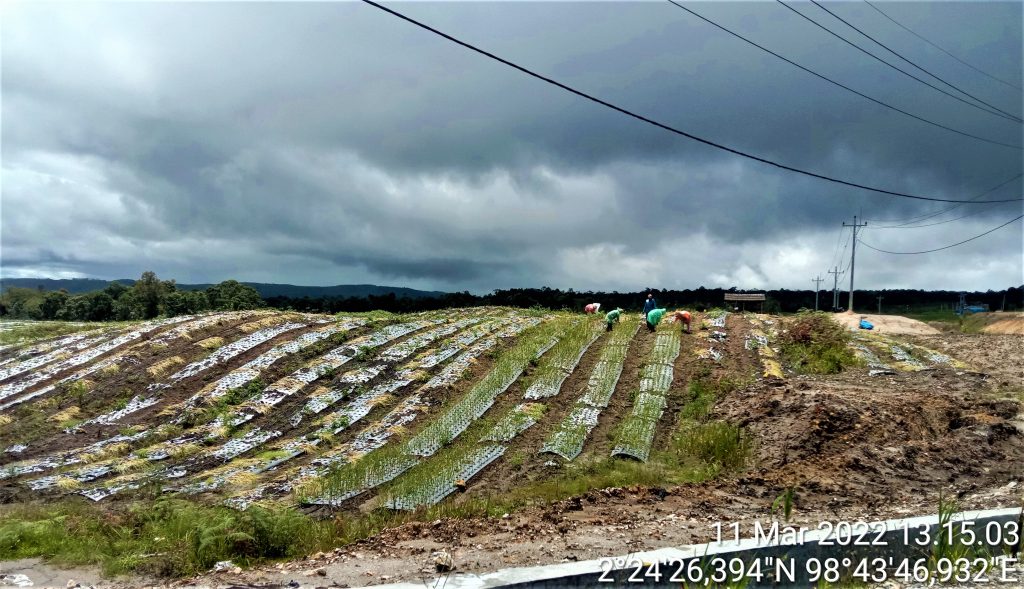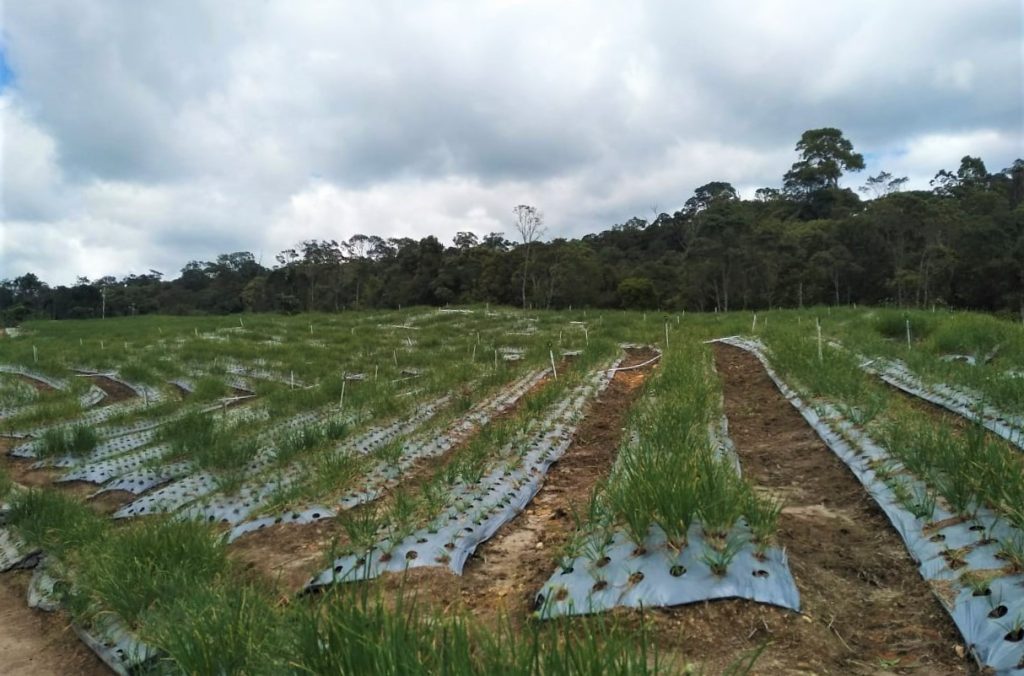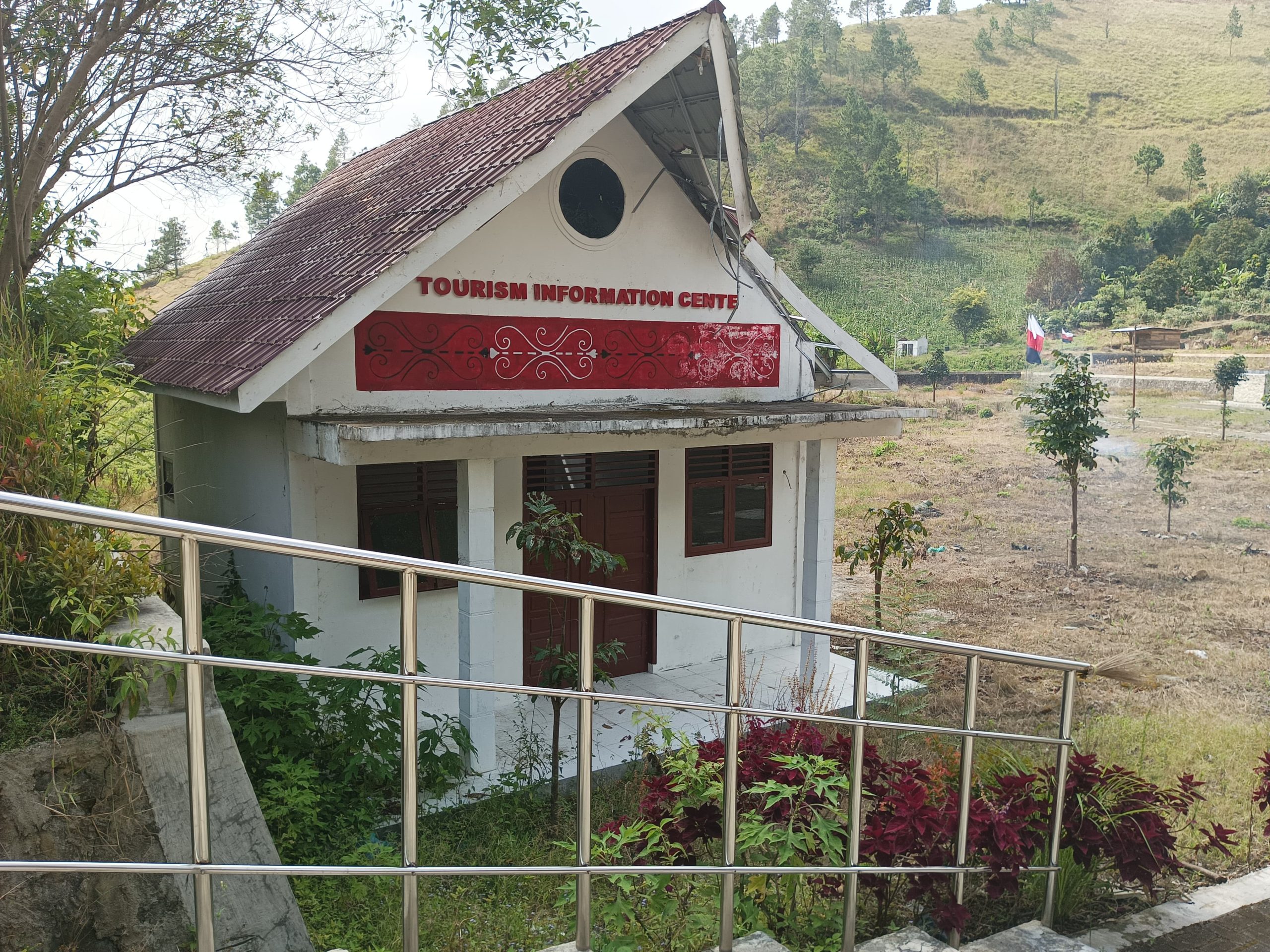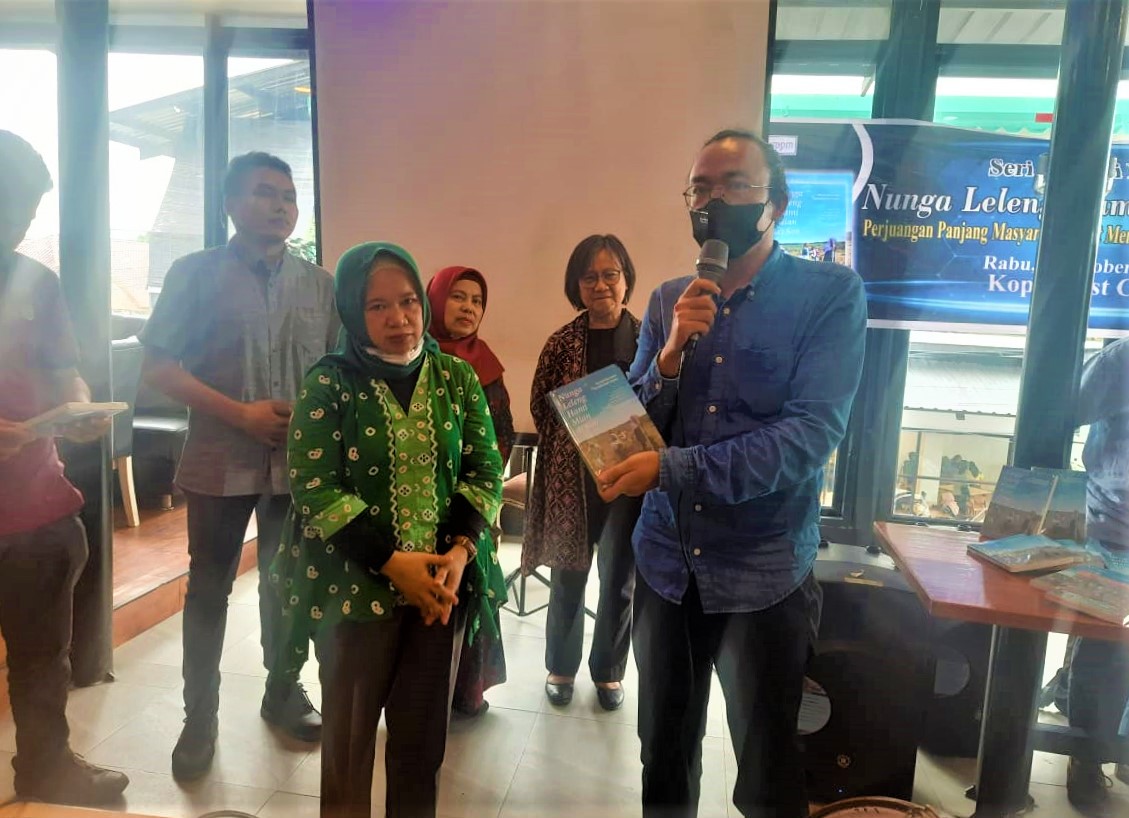Traditional Farmers, Smart Farmers
“Farmers in Siria-Ria are traditional farmers”, explained Mr.J.Lumban Gaol, Siria-Ria Village Head, during the Agricultural Technology Socialization event in early November 2022 at Siria-Ria Village. The socialization was facilitated by the Food estate facilitator together with several agricultural technology platform companies to encourage Siria-Ria Village to become a smart agriculture area.
Traditional farmers are farmers who still carry out agricultural systems based on local knowledge with simple technology, and rely on existing farming family resources. Until now, farmers in Siria-ria still rely on local food crops and diverse horticultural crops. These crops, in addition to meeting local food needs, are also sold to local markets.
Almost all families in the village still have granaries. Granaries are a pearl of local wisdom inherited by their ancestors. Granaries are the storage of paddy during the harvest. It usually takes the form of a large wooden crate, in some houses, this crate is also used as a bed.
They will dry and grind the rice according to their daily food needs. Some are used for traditional feasts in the village. In June-August and December-January, there are many traditional feasts in the village. The women usually carry a “tandok” of rice as a contribution to the celebration. Rice is usually brought for joyous occasions such as marriage, thanksgiving for the birth of a child, entering a new house, and others. Rice is brought for sorrowful occasions. The rest is left in the barn as a food supply for a year. That is why the main commodity produced by farmers in Syria is rice because, in addition to answering food needs, it is also closely related to the customary system that is still valid today. It is conceivable that if they do not produce rice, then traditional values will also be degraded.
In addition to rice, farmers in Siria-Ria Village also produce andaliman, a typical Toba Batak spice. In December-January, the price of andaliman can reach Rp.200,000 to Rp.300,000 per kilo. During these months, there are usually many traditional feasts. There is almost no typical Batak food that does not use andaliman, such as arsik, sambal tombur, saksang, naniura, natinombur, namargota, napinadar and so on. You can’t imagine, if andaliman doesn’t exist, how the typical Batak culinary tastes. If andaliman is extinct, many Batak culinary are also extinct. If you go to Syria, you will see many andaliman trees growing in farmers’ fields.
Farmers in Siria-ria, in general, also still recognize the concept of marsiadapari (helping each other), when marsuan (planting rice) and harvesting. Indeed, for other horticultural farming, they already pay for labor outside the family. But the labor used is still local labor, aka from the village itself,
Their farmlands are planted with various types of crops, such as corn, chili, cabbage, leeks, sweet potatoes, cassava, tomatoes, and other vegetables. Very diverse. Indirectly, this diverse agricultural system is also, according to them, to anticipate large losses, in case of crop failure or falling prices. If one product loses, there is still hope for other products. Potatoes, shallots, and garlic are planted in bulk and widely, which is a new thing for them, after the presence of the Food Estate program.
Another excellent product that characterizes this village and several others in Pollung is the incense plant. The men, several days a week, stay in the tombak (forest) to care for and preserve the incense spears. Currently, the price of the best quality frankincense is around Rp.300,000 per kilo. Indeed, according to some frankincense farmers, frankincense production in the last ten years has continued to decline, due to an environment that is no longer friendly to frankincense. PT Toba Pulp Lestari has planted eucalyptus around their spears.
The way of farming applied by traditional farmers in Siria-Ria until now, actually shows how traditional farmers in Tano Batak are smart, sovereign, and resilient farmers. This agricultural system should be developed by the government to support the nation’s food sovereignty. The term smart agriculture which is intensively socialized by the government in the Siria-Ria food estate area is no better and more sophisticated than traditional agriculture.
Smart Agriculture, Answering Which Farmers’ Problems?
During the socialization of smart agriculture technology, the Head of Siria-Ria Village also argued that the technology introduced was far from the reach and understanding of farmers in his village. The term alone is very foreign to them.
Smart Agriculture, in general, is an industry 4.0 era technology for the development of modern agriculture. The application of this agricultural system includes four things, first, agricultural management to be more productive, starting from land preparation, mapping, climate monitoring, irrigation, fertilizer use, production estimation, and others; second, the use of various advanced technologies in the harvesting process; third, storage of crops that pay attention to room temperature so that the quality is maintained; and fourth, the marketing or distribution process that is more attractive, both in quality and packaging.
According to the village head, operating the agricultural technology platform is also not easy for farmers and is not what they need. Moreover, according to the interviewees, the technology is also adopted from Germany, which does not yet exist in Indonesia. You can imagine how difficult it is for traditional farmers who have been practicing their local wisdom to adapt to this foreign technology.
The platform companies present also offered several cooperation schemes with Food Estate farmers in Syria, including profit sharing and rental systems. One of the technologies offered is the procurement of robots to help farmers harvest on Food Estate land. The offer is increasingly confusing for farmers, because according to them, the current problems of farmers are higher production costs, extreme weather, and increasingly expensive fertilizer prices, while the prices of agricultural products fluctuate and tend to be low. The procurement of smart agriculture applications offered by the Food Estate Program manager will only increase their production costs, which in turn will increase their debt burden.
According to the farmers who attended the socialization, what is most needed now is an answer to the acute problems they are facing. The answer is certainly not smart agriculture technology.
Farmers in Syria are not demanding something sophisticated that is beyond their reach. They only ask the government to answer the problems that they have been facing themselves, poor infrastructure, inequality in land and natural resource management, poor irrigation systems, expensive and scarce fertilizers and pesticides, unstable prices for agricultural products, a hostile climate due to environmental damage and no guarantee of farmer protection.
Mr. Mei Manullang, a farmer who used to join the Food Estate Program in Siria-ria Village, admitted that he was very happy to receive the Food Estate Program, hoping that it would benefit them. He welcomed the development of road infrastructure. Before the food estate, one of their difficulties was poor road access. But the question is, is it only through this Food Estate Program that agricultural road access will receive attention? What about agricultural areas that are not included in the Food Estate Program?
According to Pak Mei and several other farmers, without the Food Estate Program, the government would not have built their roads. Currently, on his two hectares of land that was previously included in the Food Estate Program, he has planted chilies, corn, and other commodities that are not included in the cooperation scheme with the Food Estate Program. Unfortunately, according to him, the results have not been reliable to meet the family’s living needs. He still regularly goes to the tombak (forest) for his chili and to the andaliman garden. According to him, these two products are still their mainstay to fulfill their daily needs.
Pak Mei is not alone, 90% of the farmers who used to participate in this program no longer join the Food Estate Program scheme. For those who have capital, they manage it themselves with various types of plants, but for those who do not have capital, they abandon it. So, don’t be surprised if a lot of food estate land has been overgrown with weeds or abandoned by its residents. They return to managing frankincense, andaliman, and rice.
However, Pak Mei and his friends also have concerns, especially regarding the contract they had signed. When they got the land certificate, they were bound by various conditions, such as the allocation of the land only for food estate development.

Repetition of Green Revolution Failure
The Food Estate Program in Siria-ria, which has been running for more than two years, from KSPPM’s observation, this program shows many failures. Not only does it harm farmers but also the state. The government never seems to learn from various failures in mismanaging the agricultural sector.
The smart agriculture system that is currently being introduced is a new form of the green revolution, a time when various technologies were used to increase agricultural production to answer the food needs of the rapidly growing world population. In Indonesia, the green revolution began during the New Order era in the 1980s, with the food self-sufficiency program. Almost half a century has passed, but is it true that by implementing the green revolution, our agricultural system has improved? Can the agricultural system developed so far answer the food needs of the nation’s population? Or on the contrary, are farmers increasingly alienated from their land, from production, consumption, and technology?
The green revolution has devastated local agricultural systems based on strong principles of togetherness or mutual assistance. Marsiadapari or marsiurupan, which is the principle of helping in the local agricultural system of the Batak people, has been replaced by the presence of agricultural technology, which directly creates individualism and competitiveness. The destruction of this principle of togetherness and helping each other is felt today, where there is an increase in production costs for the procurement of agricultural technology. If agricultural technology is not available, farmers are forced to pay for agricultural labor, which was previously overcome by working together or helping each other. Marsiadaoari and Marsirumpa are increasingly rare in rural areas in Tano Batak (Batak Land).
Not only is the green revolution costly in terms of labor, but it has also pushed farmers into a trap of dependence on genetically modified seeds, fertilizers, and chemical pesticides. To boost yields, the land is forced to produce continuously with the presence of various kinds of chemical fertilizers and pesticides. Previously, farmers in Tanah Batak knew the concept of environmentally friendly agriculture, namely “sinur na pinahan gabe na niula (livestock breeds, agriculture thrives)”. Agriculture maintains the relationship of all creatures and keeps the land so that it can continue to produce well in a sustainable manner.
The contribution of the green revolution to the downturn of the agricultural sector in Indonesia does not seem to be a valuable lesson for the government. Promoting smart agriculture to traditional farmers in Syria is not the right choice. It will only increase the desperation of farmers to develop their farms amidst the many challenges that must be overcome. The term smart agriculture itself is a term that assumes traditional agriculture is not a smart farming system. In fact, until now, traditional farmers can survive many challenges, also showing that they are smart farmers. Not only smart but also resilient.***









